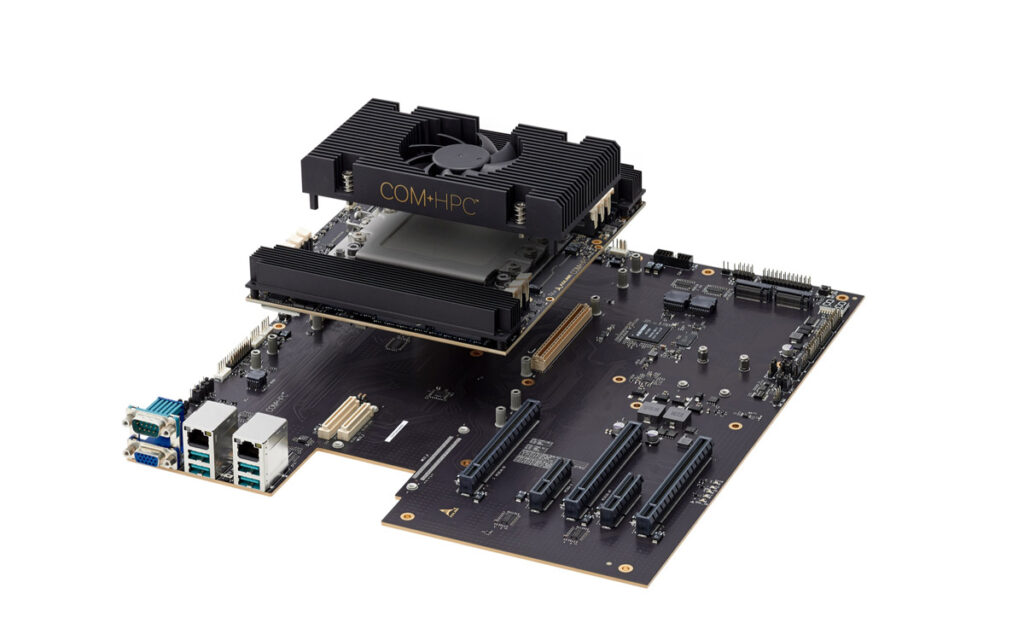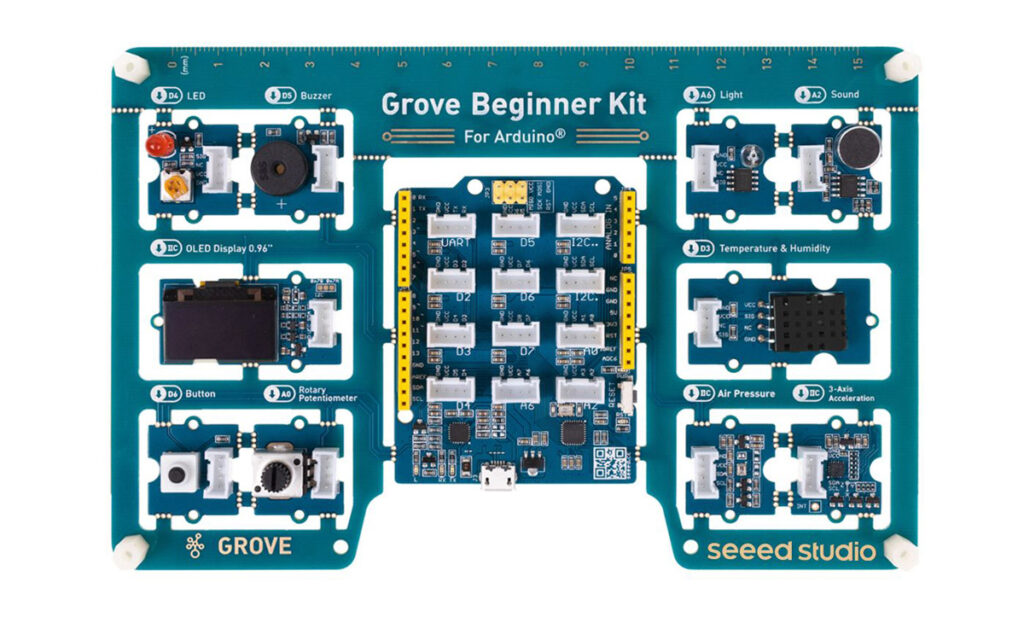

In last year’s Boards Guide, the overarching themes were scarcity and how vendors and makers coped with ongoing supply chain failures. Some industry experts even predicted that things might never fully return to normal, but thankfully the debacle is easing this year. As depicted on the cover, maker titans Arduino and Raspberry Pi are both back with new flagship boards in the form of the Uno R4 and Pi 5 respectively. As I type this, rpilocator.com is showing pagefuls of in-stock listings for pretty much the full Raspberry Pi product range, and I see hundreds of the latest Arduino Uno in stock at DigiKey, SparkFun, Pimoroni, and our own Maker Shed. To put it succinctly: boards are back!

Within this revivified ecosystem, we are seeing various exciting genera evolving. The alphas — or as I’ve been calling them, beast boards — such as DFRobot’s LattePanda Sigma and Nvidia’s Jetson Orin Nano, offer incredible computing power and performance, rivaling or even exceeding their desktop counterparts in some applications. Another interesting class of all-in-one hybrids has emerged from the primordial ooze, which feature built-in displays, sensors, and sometimes even cameras. Boards like the SparkFun Datalogger IoT, M5Stack CoreS3, and DFRobot Unihiker represent a complete project lab in one compact unit, allowing you to start diving into code right away, without any soldering or breadboarding.
Get a free digital copy of the Make: Guide to Boards 2024 featured in Make: Volume 87. Compare specs for 80+ of the latest microcontrollers and single Board computers (including those mentioned in this article)!
Last year, we identified several species of silicon that were thriving in our challenging environment. RP2040, ESP32, and the new phylum of RISC-V-based chips continue to spread their DNA across the dev board ecosystem, even as other chips become available once again. Across this year’s featured boards, we’re still seeing a number of Espressif ESP32-based and Raspberry Pi RP2040 designs, as well as the occasional STMicro, Nordic, Realtek, GigaDevice, NXP, Broadcom, Renesas, and even Intel chip. While Arm still dominates, RISC-V chips appear to be climbing the silicon food chain. And if you want to create your own specimen, services like Zero to ASIC Course and Tiny Tapeout that let you do just that!
The Internet of Things (IoT) biome has been evolving quietly, perhaps somewhat in the shadow of the burgeoning AI habitat, although the pace has picked up recently thanks to the increasing popularity and availability of LoRaWAN, enabling products like Seeed’s SenseCAP T1000 LoraWAN Tracker and Wio Tracker 1110. IoT behemoths Particle are back with a new Photon 2 Wi-Fi/BLE board and a generous Free tier of their cloud platform that should far exceed the needs of most makers. And if you’re really heading out in the wilderness, the SparkFun Artemis Global Tracker can send and receive short messages almost anywhere via the Iridium satellite network.

Beast Wars
While single-board computers (SBCs) like Raspberry Pi and LattePanda may dwarf the power of smaller microcontroller boards, there are even mightier megafauna that focus on high-performance computing, typically for AI, industrial, and server applications. Compared to the quad-core Cortex-A72 processor found in the Raspberry Pi 4 for example, a Jetson Orin module contains six to twelve A78 cores. Combined with the Ampere GPU Tensor and CUDA cores, the six A78 cores in the Jetson Orin Nano Developer Kit provide 80x the AI performance of the previous entry-level Jetson Nano, with 6.6x the CPU performance — comparable to an Intel i7 on compute alone.
But when you’re ready to unleash the ultimate beast, the Ampere Altra Dev Kit’s 128 cores benchmark in the realm of 100 Raspberry Pi 4s, and with greater energy efficiency. These machines outdo even Intel’s powerful Xeon D-2700 with several times the performance at a fraction of the energy cost, and the ability to add Nvidia GPUs for even more AI performance.

As boards evolve, so do the language families used to communicate with them. Adafruit has invested heavily in supporting their CircuitPython fork of the MicroPython compiler and interpreter over the past six years, and with support for many popular SAMD-, nRF-, and RP2040-based boards, plus a new web workflow in 8.x that allows ESP32-based boards to be used, the world of hardware development is opening up delightfully to a generation of Python software developers.


Meanwhile, Arduino have thrown their weight behind the original MicroPython platform, both in the form of their own “experimental” Arduino Lab for MicroPython IDE, and in their support of the OpenMV IDE. Raspberry Pi have also favored MicroPython with their Pico and Pico W boards and documentation, although developers can just as easily use CircuitPython if they prefer. UK-based serial innovators Pimoroni have also forked MicroPython to support their own RP2040-based products, as well as Raspberry Pi’s Pico boards.
Despite Python’s emergence as a great way to get started in embedded, we’re still seeing C/C++ dominate overall, with most vendors taking a C-first approach to driver/library development and board support.
As species mature, they tend to evolve specialized adaptations to cope with specific environments. Companies like Adafruit, SparkFun, and Pimoroni have been cranking out unique, special-purpose boards targeting LED animation, cosplay, home automation, data logging, and other specific applications, often based around inexpensive RP2040 and ESP32 chips. Pete Warden’s Useful Sensors has taken this concept even further, with devices that answer a single question like “Is that a person?” or “What does that QR code say?” Projects that once called for a general-purpose Uno or Feather, plus a stack of shields, breadboards, and breakouts, can now be accomplished with a single, purpose-built board like Pimoroni’s Servo 2040 18-channel servo controller and Interstate 75 RGB LED matrix driver, Adafruit’s Matrix Portal S3 CircuitPython-powered internet display enabler and RP2040 Prop-Maker Feather LED/audio/servo controller, and SparkFun’s Thing Plus Matter MGM240P home automation nexus.

We Are the Mutants
Over a decade ago, a curious mutation appeared on the maker landscape. In a world of C and C++, a new board emerged based on Microsoft’s C# language and .NET framework. As was the style at the time, the board was named Netduino, for its Arduino Uno form factor. Its creator, Chris Walker, even wrote a Getting Started guide for Make: in 2012.
Fast-forward to 2023, and the Netduino, acquired by Wilderness Labs, has evolved into the Meadow project, with the Adafruit-style Meadow F7v2 Feather emerging from beta via the v1.0 Meadow.OS this year.
In the same way that Micro/CircuitPython enables software developers to dive into hardware development, the .NET Standard-compatible runtime allows an army of C# devs to create enterprise-level IoT solutions.
With an extensive API, fantastic documentation and examples, the available all-in-one Project Lab v3, plus copious detailed Hackster walk-throughs, Meadow is a great way to get started with embedded development for .NET devs — or anyone!
Excitingly, we’re seeing more general-purpose boards that encourage crossbreeding thanks to the plethora of Stemma QT, Qwiic, and Grove ports that ease cross-vendor compatibility and obviate the need for breadboarding or soldering when just a few sensors or actuators are needed for a project. Symbiotic relationships between vendors have resulted in some interesting collaborations as well, such as the beefy new i.MX RT1010-powered M7 Metro from NXP, Adafruit, and DigiKey, and the exciting new XRP (Experiential Robotics Platform) kit from SparkFun, Raspberry Pi, DigiKey, DEKA, and others, which provides an inexpensive on-ramp to FIRST Robotics with a free curriculum from Worcester Polytechnic Institute.
The world of boards is flourishing again, thanks to renewed supply and increased diversity. It was incredibly challenging to narrow the side-by-side comparison in our 2024 Boards Guide, mailed with this issue, to just 81 standout boards, and harder still to pick 14 supreme specimens for our New and Notable list. If one theme has emerged across the ecosystem this year, it’s that there’s never been a better time to be part of this vibrant, ever-expanding community.
This article first appeared in Make: Volume 87.
ADVERTISEMENT





